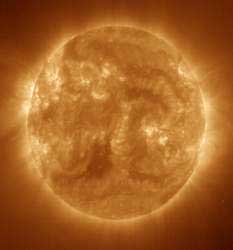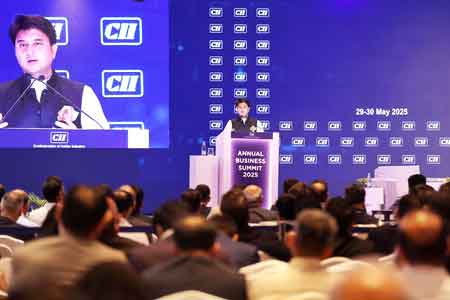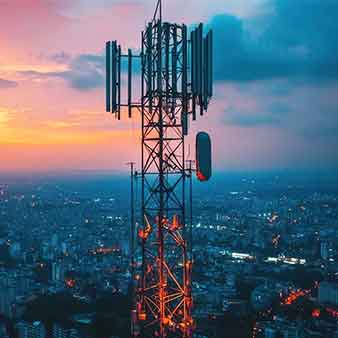Astronomers from the Indian Institute of Astrophysics (IIA), an autonomous institute of the Department of Science and Technology, have accurately estimated the physical parameters of thermal and magnetic field structures of solar coronal holes.
These structures have a significant influence on space weather that affects satellites, as well as the Indian summer monsoon rainfall.
“Coronal holes, which are dark regions in X-ray and extreme ultraviolet images of the Sun, have open magnetic field lines and are hence important for understanding the interplanetary medium and space weather. The latitude dependence of temperature and the magnetic field strengths of these coronal holes have now been characterised accurately,” said the team from the (IIA).
A recent physics-based study found that besides the influence of sunspots, parameterised study of the radiative effects of coronal holes can satisfactorily explain the variability of Indian Monsoon rainfall.
To probe further, astronomers from the IIA used eight years of full-disk calibrated images observed by the Solar and Heliospheric Observatory (SOHO) space probe.
The study, published in the journal Astronomy and Astrophysics, accurately estimated the physical parameters of thermal and magnetic field structures of coronal holes.
“The study also offers a comprehensive understanding of how these near-equatorial coronal holes evolve as they traverse the solar disk,” said Dr Manjunath Hegde of IIA, and lead author of the study.
In addition, the team “found that there is no latitudinal variation of the temperature structure of coronal holes and also that there is a latitudinal variation of the strength of magnetic field structure of coronal holes that increases from the solar equator to the pole”.
“The first result suggests that coronal holes are likely to originate from the deep interior, whereas the second result suggests that coronal holes might have formed from the superposition of Alfven wave perturbations”, said Dr. K.M. Hiremath from the same institute.
"Coronal holes" in the sun's atmosphere were discovered in the 1970s by X-ray satellites. These appear dark in the X-ray and EUV wavelengths and are low-density regions that have open magnetic field structures in the interplanetary space.
These solar activity phenomena are intense sources of fast (450-800 km/sec) solar wind -- streams of charged particles that escape from the sun, more easily into space. This high-speed solar wind can interact with the Earth's magnetic field, causing disturbances like geomagnetic storms.
Effects of sunspots on the Earth's atmosphere and climate are well recorded, said the team. Considering these imminent dangers of space weather effects and the long-term influence of the solar coronal holes on the Indian Monsoon rainfall it is important to study their thermal, and magnetic field structures and their origin, they noted.






Axion 04 mission postponed again after propulsion bay leak; ISRO, SpaceX begin repairs
The highly anticipated Axion 04 mission, which was set to launch on Wednesday after a series of earlier delays, has been postponed once again due to a leak detected in the propulsion bay during a pre-launch test, the Indian Space Research Organisation (ISRO) announced on Wednesday.
Bad weather delays Shubhanshu Shukla's flight to ISS to Wednesday: ISRO
Indian astronaut Shubhanshu Shukla's historic flight to the International Space Station (ISS) has yet again been delayed due to poor weather, the Indian Space Research Organisation (ISRO) said on Monday.
Nearly 47 pc of digital transactions in India, UPI has gone global: Minister
Around 47 per cent of the digital transactions are in India and the unified payments interface (UPI) has gone global in its scope, Union Minister of Communications Jyotiraditya Scindia has stressed.
Total telephone subscribers in India increase to 1,203.84 million in April
The number of total telephone subscribers in India increased from 1,200.80 million at the end of March to 1,203.84 million in April, a monthly growth rate of 0.25 per cent, the government’s telecom subscription data showed on Thursday.
ISRO’s EOS-09 launch fails due to 3rd-stage anomaly
The Indian Space Research Organisation (ISRO) on Sunday suffered a setback as its 101st mission, PSLV-C61 carrying the EOS-09 satellite, faced a technical malfunction in the launch vehicle.
IT Ministry, Tripura DIT discuss AI’s role in citizen-focused governance framework
Senior government officials have underscored the pivotal role of artificial intelligence (AI) in revolutionising governance paradigms, reiterating AI’s growing relevance in enabling data-driven policymaking, augmenting service delivery mechanisms, and optimising administrative efficiency, IT Ministry said on Saturday.
Air pollution exposure raises brain stroke risk in older adults: Study
The study showed that elderly males are disproportionately affected by ischemic stroke related to air pollution. Ischemic stroke is a condition resulting from reduced blood supply to specific areas of the brain due to blocked blood vessels. The primary contributor to this burden is PM2.5 from air pollution.
NPCI to decide on person-to-merchant payments cap on UPI transactions: RBI
In order to further boost digital payments, the National Payments Corporation of India will be enabled to set the limit on person-to-merchants transactions via Unified Payments Interface (UPI), RBI Governor Sanjay Malhotra said on Wednesday.